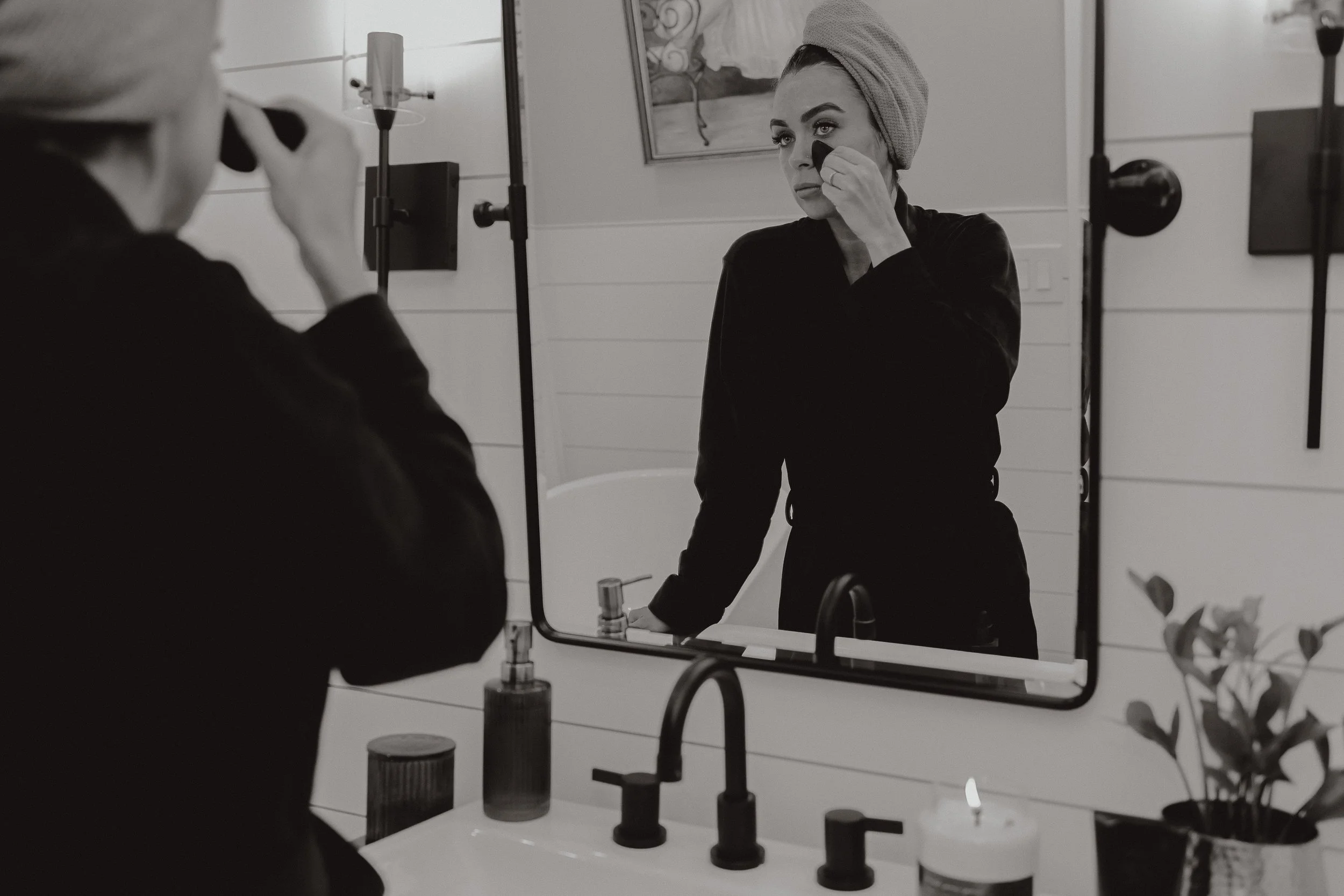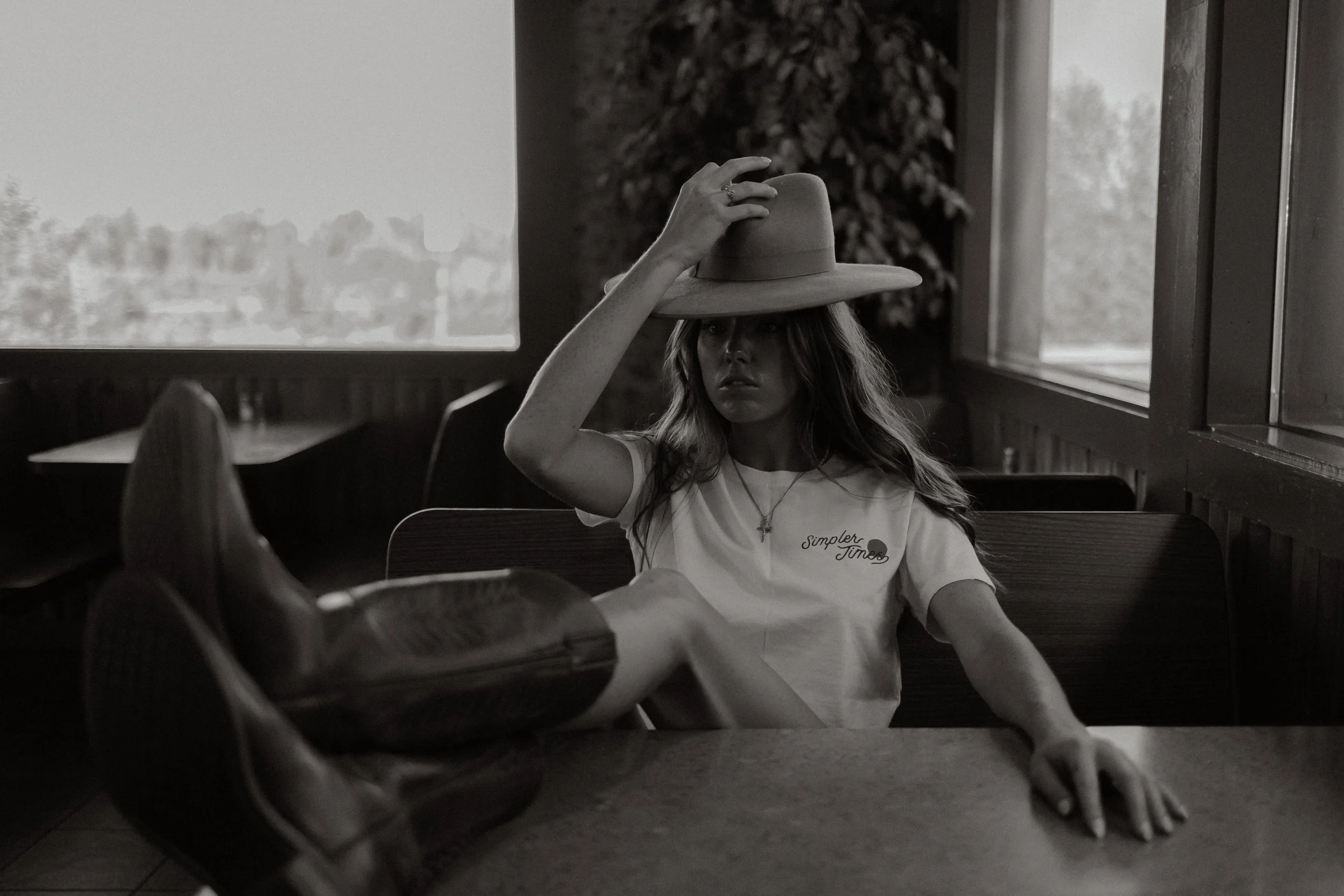AFTER THE BREAKUP: Repairing and Regaining Your Sense of Self (for the recovering co-dependent)
The panic, pain and distress that is commonly felt when a codependent relationship ends is hard to put into words. As a codependent relationship comes to an end, there’s often a “hot & cold” and “on & off” dynamic that makes the break up all the more drawn out and painful.
It can feel like the ground has been pulled out from under you—like your sense of identity, stability, and worth was tied so tightly to another person that their absence leaves you lost and in pieces. For many recovering from codependency, the breakup is not just the end of a relationship—it’s the beginning of an emotional unraveling that, while painful, also holds the potential for deep healing and self-reclamation.
If you're new to the topic of codependency here’s a helpful place to start: Codependency (what it is and how to heal) .
This post is for those navigating that raw aftermath, unsure of who they are without the other, and ready to slowly begin the work of repairing and regaining their sense of self and self respect.
What Is Codependency? (let’s refresh)
Codependency is an unhealthy pattern of emotional and psychological reliance on another person — often at the expense of your own needs, desires, and identity. When you're in a codependent dynamic, you find yourself hyper-focused on your partner’s needs while neglecting your own.
Over time, this can lead to the dissolving of key pillars in your life:
Your friendships
Family connections
Personal routines and self-care
Creative or professional goals
Time for yourself
You say yes when you mean no. You become overly responsible for the other person's mood, actions, and comfort.
You shrink. You disappear. Nothing about this way of being is doing anything of value for you; nothing.
What Gets Lost in a Codependent Relationship?
There’s a lot at stake when you let go of putting energy into yourself, while hyper focusing on your partner, which is often what happens within a co dependent dynamic.
Let’s name the core parts of you that often fall away:
✦ Self-Identity
You lose track of who you are outside the relationship. You may experience anxiety, depression, or even turn to coping behaviors to numb the disconnect.
✦ Self-Awareness
You stop checking in with your own needs, desires, and boundaries — or you feel guilty when you do as it takes the focus off of them.
✦ Self-Care
Basic needs like sleep, nutrition, scheduling doctor’s appointments, or simply doing the little things that you “used” to do for yourself fall off the radar.
✦ Core Values
You begin to bend your values to keep the peace or maintain closeness — even if it means going against what you believe to be true or value.
✦ Boundaries
You expect your partner to “just know” your limits, or you avoid expressing them for fear of conflict or abandonment.
✦ Lack of Autonomy
You may feel unsafe acting independently in the relationship, or incapable of making decisions without the other person.
✦ Self Respect
It’s common to feel very empty and lost after the break up (and even during)- You’ve spent the majority of your energy focusing on another person, so when everything is said and done you find yourself lacking self respect along with your sense of self.
Why Is It So Hard to Leave?
People in codependent relationships often stay because the thought of being alone feels terrifying. They have connected their sense of worth and meaning to another person - often a person who leaves them feeling empty and unappreciated.
Even if the relationship was draining or dysfunctional, you may find yourself longing, obsessing, or questioning your decision to leave.
Why?
Because a codependent relationship often isn't "bad" all the time. Your partner likely had moments of kindness or made promises of change. (this helped you validate why you stay and provided you hope for how it “could be.” ) The unpredictable mix of affection and hurt creates a trauma bond that makes it hard to leave and even harder to think clearly about the relationship.
The 3 R’s of the Codependent Breakup (via Dr. Ramani)
Psychologist Dr. Ramani Durvasula outlines three emotional patterns many people experience post-breakup, especially those healing from codependency:
1. Rumination
You replay the relationship endlessly:
What if I had tried harder?
Maybe I overreacted.
Was it really that bad?
You idealize the potential. You minimize the harm. Rumination is a trauma response — your mind trying to make sense of something that often never made sense to begin with. More about what rumination is here.
2. Regret
You start to blame yourself:
I should’ve seen the red flags.
Why didn’t I leave sooner?
This emotional spiral fuels your inner critic and keeps you stuck in the pain loop. It can even make you vulnerable to reconnecting with a partner who didn’t value you.
3. Reaching Out
You may feel an intense pull to reconnect — seeking closure, answers, or a “do-over.” It’s important to note that this urge is often withdrawal from the trauma bond, not clarity. Reaching out often reopens the wound you’re trying to heal.
What is the Root of Codependency?
Codependency is a dysfunctional relationship pattern that often stems from a combination of factors including childhood trauma, dysfunctional family dynamics, and insecure attachment styles. These experiences can lead to low self-esteem, a distorted sense of self, and difficulty establishing healthy boundaries, all contributing to codependent behaviors in our adulthood relationships.
(see resources below to dive deeper into the root healing that goes into recovering from codependency.)
What the Codependent Might Feel After a Breakup
Shame or feeling “defective”
Intense fear of being alone
Panic, anxiety, or intrusive thoughts
Low self-esteem
Jealousy or fear of being replaced
Obsessive thoughts about your ex — What are they doing now? Have they moved on?
All of this is normal for the codependent to experience — but it doesn’t mean you’re broken. It means your nervous system is trying to recalibrate after losing what it thought was “home.” It’s the consequence from making someone outside of you “the answer” and “the source” of your own worth.
How to Rebuild After Codependency
Recovering from codependency isn’t just about “moving on.” It’s about moving inward — and reclaiming the parts of you that you’ve ignored or intentionally silenced to “keep the peace.”
In a nutshell; rebuilding is about redirecting your energy from them back to you.
Here’s where to begin to rebuild:
✦ Set Boundaries
Reclaim your right to say no, to pause, to prioritize. Boundaries will be your bridge back to self-respect.
✦ Practice Self-Care
It’s the continual small habits that you do daily that helps you maintain your whole body wellness. It's booking the dentist, taking a walk, reconnecting with the special people in your life, it’s keeping the promises that you make to yourself.
✦ Build Self-Esteem
Affirm your worth without needing external validation. Reflect on what makes you authentically you apart from your ability to feel and be needed by someone or something outside of you.
✦ Identify Codependent Patterns
Notice where you seek approval, where you avoid conflict, and where you tend to people-please. Gaining awareness around the behaviors that are in your control and working toward shifting them is the first step to change.
✦ Feel Your Feelings
Let grief, anger, sadness, and fear move through you — feel it. This is where the healing lives. If you find it difficult to “feel your feelings” feel free to read this post on how to do just that here.
✦ Be Assertive
Use your voice. Say what you mean. Ask for what you need. Being direct doesn't make you difficult — it how you lead with self respect my friends.
✦ Meet Your Own Needs
Tend to your body, your desires, your ambitions. Make the decision that self-abandonment is no longer an option.
Takeaway
Healing from a codependent breakup is not linear, as the healing process never is. It’s raw. It’s layered. And it can be empowering, if you allow it to be. You’re not just recovering from a relationship — you’re recovering and reviving your sense of self and self respect.
This. Is. Huge.
The pain you’re feeling isn’t a sign that you should’ve stayed.
It’s a sign that your nervous system is adjusting to freedom. A sense of freedom that’s new, and maybe not even wanted (yet), however that incongruence is normal to the process of coming back into yourself.
Be patient with yourself and continue to focus back to yourself when thoughts of the other try to pull you away from your core.
The huge shift to healing is the recognition that: You’re allowed to choose you now (and you should).
Recommended Somatic Visualization for the Codependent
Find a comfortable space that’s quiet and close your eyes.Visualize a cord that is attached to the core of your body that’s inappropriately connected to “the other” (whoever the codependent relationship is with). Continue to visualize this cord taking all of your energy and resources and sending it to the other. Recognize in this visualization that by having this cord attached to “them” you’re consequently malnourishing and depleting your life force energy. Recognize how you’re dimming your sense of self, light and love by this cord being so wrongly attached to them.
Now, visualize a pair of large scissors cutting the cord and reconnect that cord back into you; where it belongs and where it always needs to stay. Spend time sitting in the sensation of what it feels like to feel light, reviving energy flowing back into your body. Sit with this feeling of replenishing your sense of self respect, self identity and self love as long as it feels good to do so.
resources for healing codependency
Codependent No More by Melody Beattie
Boundaries by Henry Cloud
Women Who Love Too Much by Robin Norwood
Facing Codependence by Pia Mellody
It’s Not You by Dr. Ramani Durvasula
Should I Stay or Should I Go by Dr. Ramani Durvasula
*Above image by Photographer Amy Lynn Bjornson
Codependency (what it is and how to heal)
“Help, I think I’m codependent.” Is this what led you to this post? Do you think that you might be codependent?
If so, this is for you my friend. This is my attempt to help you understand what may be going on within you and playing out within your relationships. This is for you to dig deeper into how to help yourself so you can have healthy relationships; not relationships where you constantly feel drained, under appreciated, lost, not good enough, exhausted, confused, I can keep going……. let’s just start, shall we?
What is codependency?
Codependency is an unhealthy amount of psychological and emotional reliance on another person. This dependence can occur with a family member, in a friendship or intimate relationship. For the purposes of this post; I’ll be focusing on codependency within intimate relationships. When there’s a codependent dynamic, you being the codependent, will find yourself thinking about their wants and needs above your own.
You might find yourself speaking in “we’s” or “they” instead of an affirming ownership of “I.” Saying things like: “They want me to” “They think I should.” Your language often reflects a codependent dynamic by framing things without voicing “I.” “I want to do…” “I’m going to…” This is so because in a codependent dynamic; you lose your sense of ‘I.”
In a nutshell: Codependency in intimate relationships
In a romantic relationship the codependent can easily lose their sense of self in another by taking the focus off their life; their goals, needs and desires as they begin to solely focus their time and energy thinking about the wants and needs of their partner. Discomfort begins to form with the thought of life without the other and relief comes when you’re back in the energy of or in contact with them. Needless to say that this doesn’t end well; this results in a loss of self identify, self confidence and causes depression, anxiety and substance abuse issues.
Strong Traits of Codependency
An individual lacking the ability to make decisions for themself and say “No”
People pleasing behaviors. (a “whatever works for you” mentality.)
A lack of self identity or sense of self
An unhealthy amount of giving while not getting much back
An individual easily swayed by outside influence due to a lack of a core sense of self
What does a codependent intimate relationship look like?
In a codependent relationship there typically is the dynamic of the codependent (the giver) and the one who "needs to be needed" (the taker.) If this imbalance goes on long enough, where one person is depleting themself of all their life force energy in order to appease the other, the result is a loss of self. *A very common dynamic in codependent relationships is the pairing of a narcissist and an empath (the codependent.)
In a codependent dynamic, a very imbalanced amount of energy goes toward the "taker" as the codependent depletes their energy constantly giving while their needs go unmet. There often is a lot of manipulation from the "taker," which keeps the codependent in a powerless role. This “powerless” dynamic chips away at the codependents sense of self, self identity and depletes their general level of self confidence.
The codependent “plays small” by overly apologizing, taking responsibility for their partners actions and behaviors, putting their partner’s needs before their own and idealizing their partner. (Putting their partner on a pedestal; seeing them as “the best thing that has ever come along.”) As the codependent becomes "a shell of a person" they often loose their general sense of identity and the "taker" gains more power and control, and so the dynamic goes.
How do I know if I’m codependent? (signs & symptoms)
A strong feeling of responsibility for other peoples’ emotions.
Having a strong need & desire to help other people resolve their negative emotions and moods. (Has a very difficult, if not impossible, time being happy if the one they’re with is unhappy.)
Difficulty remaining focused on your own plans, ideas and goals (*This is exacerbated when someone is upset or in a bad mood toward or around them.)
Your happiness and goals are influenced easily by other peoples’ judgement of them.
You look for validation, reassurance and encouragement from people that are the least likely to give it. (A pattern of attraction for relationships where you will never feel good enough.)
Difficulty feeling peaceful in solitude; Difficulty finding fulfillment or happiness in life outside of life with the other person.
You have trouble processing your own emotions, which leads to difficulty with emotional regulation.
A tendency to do more than their share, all of the time
Stays in a relationship where they have conscious awareness that their partner’s behavior is hurtful. (Often validating reasons why their partner “had to act” in a certain manner.)
Overly apologizing even when you have done nothing wrong.
A constant focus on where their partner is and what they are doing. Fear when their partner is without them in the world.
A lack of your own sense of self, wants or goals for your life. A desire to take on your partner’s goals and wants to find self identity.
The need to ask permission or check in with your partner about details of your day or life that have nothing to do with them. ("I’m going out to lunch with Jenny, does that work for you?”)
Experiences chronic feelings of anxiety and constantly ruminates about their relationship due to their own insecurity and desire to please the other.
A chronic state of hypervigilance to avoid conflict with the other person.
Overly exerting their time and energy to fulfill their partner’s needs. (having no time for yourself)
Extreme hesitation to express any personal needs, wants or desires.
Self sacrifices their own moral codes & belief systems in order to be on board with what the other person wants to do and believes in.
A dire need for others to like you. Having a lot of difficulty and taking it very personally when others do not approve or like you.
A consistent habit of wanting to change, fix or rescue low functioning, addicted or troubled people.
Putting the other person on a pedestal, despite the fact that they don’t merit this position
Why does codependency develop?
In a nutshell, I usually point my clients toward looking at their family dynamics from their childhood. Was there emotional or physical neglect? Substance or physical abuse? Was there *enmeshment in your family? Was there an inconsistent and unsafe home environment and parenting style that caused fear and anxiety for you as a child? Did either of your parents model codependent traits?
Codependency is often rooted in childhood, to the relationships we had with our parents (or primary caretakers). It usually develops when we had parents who were either overly protective or under protective.
Some root causes of codependency:
Childhood trauma
Codependency is often rooted in childhood trauma, such as abuse, neglect, or having emotions punished or ignored; leading to low self-esteem and shame.Fear of abandonment
A fear of rejection and abandonment can be a root cause of codependency. This fear can be the result of feeling abandoned or rejected at a young age by pivotal people and/or primary caregivers.Dysfunctional families
Codependency can develop in children who grow up in dysfunctional families where emotions are taught to be repressed and needs go unmet.Overprotective parenting
Codependent dynamics can form between children and parents who are overprotective or struggle with addiction.Post-traumatic stress disorder
codependency can be used as a coping mechanism to deal with trauma.
The bottom line is that, when childhood needs go unmet and children grow up with a lack of validation for who they are, this creates the breeding ground of how codependency develops. It also can be taught; so like I mentioned earlier; take a look at if mom, dad or a primary caregiver modeled codependent signs or traits.
(*enmeshment prevents us from developing a strong sense of self. In enmeshed families, we are not taught to explore our own beliefs, rather we feel the need to go along with the ways of thinking that we were brought into in order to avoid conflict and to keep the peace.)
What are treatment modalities for codependency?
In short, healing from codependency entails getting reacquainted back with yourself. It’s switching the focus back to you. It’s reawakening yourself to your needs, wants and desires, while learning how to navigate your relationships with those elements in healthy balance.
In terms of treatment modalities, psychodynamic therapy and cognitive behavioral therapy are two modalities that I use to treat my clients who show symptoms and behaviors of codependency. A psychodynamic approach helps my client to explore their childhood while cognitive behavioral therapy helps them to identify and shift current codependent behaviors.
How do you start to heal codependent tendencies and behaviors? (3 steps)
1. You acknowledge that the intense over thinking about “the other person” is a symptom of unhealed emotional trauma/pain within you. (The general awareness that there’s something that needs healing within you vs. giving into the obsessive feelings and attention on “the other.”)
2. You educate yourself on what co dependency is, what it looks like and why it develops.
3. You may (depending on the severity of your codependent ways) choose to work with a skilled therapist to help you identify unhealthy tendencies & uncover past family dynamics or traumas that led to codependent behaviors.
How do you walk away (respectfully) from someone that you may love, but that you also feel treats you disrespectfully?
You make the choice to choose yourself. You choose you. You choose you over them.
Codependency results when there is a strong theme of choosing them over you. A huge turning point is when you decide to pick yourself and your best interest over that of the other. You become stronger by working on aspects of your own self love, and self care routine. You put your focus back on you by putting energy back into your own life force, your well being and the things that authentically bring you joy. You start to rebuild your life by paying attention to yourself and honoring your needs instead of neglecting them.
The Bottom Line
The ultimate way to start healing and recovering from codependency: learning to shift the focus off “the other” and back to you / learning to refocus on your needs, likes & wants; choosing you vs. focusing on people outside of you to validate your own worth.
Once you uncover that the dynamic that you are getting chronically stuck in is a codependent one; you then have defined the issue and can work toward healing. Good luck on your journey. Here are some resources to further support you.
Resources for Healing
Codependency books
Codependent No More – Melody Beattie
Boundaries – Henry Cloud
Women Who Love Too Much – Robin Norwood
Facing Codependence – Pia Mellody
Should I Stay or Should I Go - Dr. Ramani
Recommended Workbook
Love Yourself; Heal Your Life - Louise Hay
Support Group
*Above image by visual artist, Amy Lynn Bjornson.





























